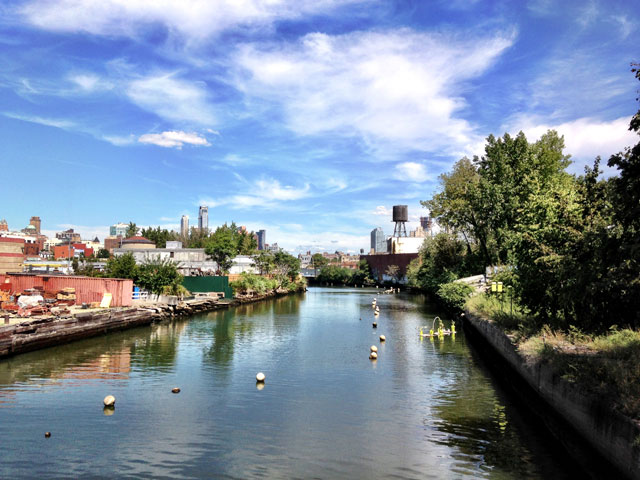
Gowanus is one of those New York neighborhoods that has a mythical quality about it. It’s a place that many New Yorkers have heard of but few have actually been to, most likely due to the Gowanus Canal, which breaks the neighborhood into sections connected by bridges. Unlike the great canals of Venice or Amsterdam, the Gowanus Canal is anything but scenic. Heavily polluted and surrounded by warehouses and industrial lots full of gravel and garbage, it’s not uncommon to see oil, raw sewage, or trash float by at any given time. When the wind hits it just right the smell is, well, something one has to experience for themselves. The canal has prevented the neighborhood from developing the way that neighboring Park Slope and Carroll Gardens have, and for many that is a blessing. In addition to the lumber yards, car shops, and recycling plants, Gowanus is also home to one of Brooklyn’s—if not New York City’s—most enduring art scenes, one that may not still be there without the canal.
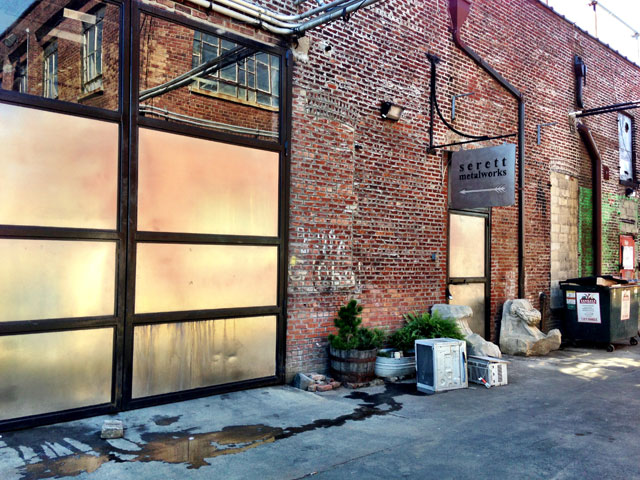
Although the Gowanus art scene has been gaining notoriety for the last several years, it has actually been around much longer. The Gowanus Open Studios, an event that invites the public to come to the neighborhood and tour artist’s studios and galleries, has been held every October for the last seventeen years. Bushwick Open Studios, which celebrated its seventh anniversary this year, seems young by comparison. Bushwick, of course, has made up for lost time, as denizens of Williamsburg are forced further and further down the L line due to skyrocketing rents. In the seven years since Bushwick Open Studios started there have been condo developments and swank restaurants popping up all over the once mostly passed over neighborhood. In contrast, in the seventeen years since Gowanus Open Studios started the neighborhood has remained mostly the same. There are a few nice restaurants and the shell of a seemingly perpetually delayed Whole Foods, but no condos and no jaded Manhattanites.
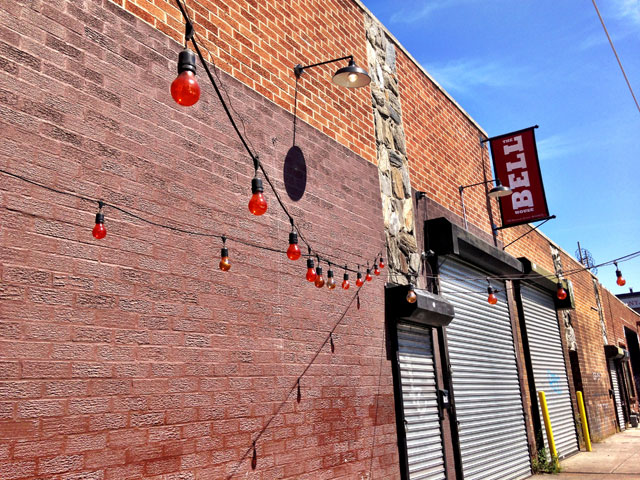
Gowanus’ slow development is not for a lack of activity, especially from its art community. In just a five by five block radius there are, among other institutions, The Gowanus Ballroom, which operates as Serett Metalworks during the day, the performing arts hall The Bell House, New York Art Foundry for sculptures and metal workers, Gowanus Loft, and the Trestle Gallery, which is part of the Brooklyn Art Space, a studio space for artists that offers group or semi-private studios, classes and workshops, and even seminars on legal advice for artists. You can walk down any block in Gowanus and you will see the bright, fluttering banners and signs for studios and galleries right next to a scrap metal warehouse or a tour bus depot.
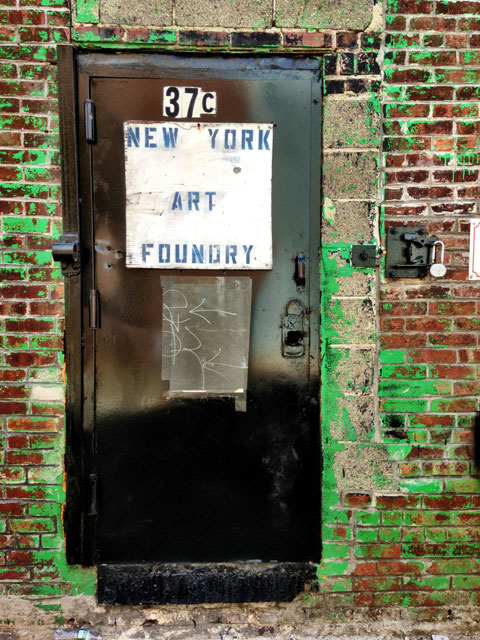
In addition to an abundance of places for art in Gowanus, there is no lack of diversity in the artistic scene. Trying to pinpoint a particular style or aesthetic of those involved in the Gowanus art scene is a fruitless endeavor. Large-scale installation sculpture sits next to water colors, which sit next to woven tapestries, which sit next to modernist abstract paintings. At the Trestle Gallery a small-works show displayed this wide range. Rhia Hurt, an artist who does administrative work with Brooklyn Art Space, gave me a tour of the studios and gallery. When I asked about the types of artists who kept studio space there, she described them as “a good mix of established artists and really talented people just coming out of school, Parsons, Pratt, places like that. There are also a lot of great self-taught artists here as well.” In addition to group and semi-private studio spaces—and even a large studio space for writers called Room 58—Brooklyn Art Space offers workshops and even seminars on legal advice for artists. Walking through the studios it seemed to me that Gowanus is a case of function coming out on top over style. The industrial, harsh nature of the neighborhood and the large warehouses where the artists come to work do not seem to be influencing a style of art, rather, those spaces provide an opportunity for work to be created without limitations. Several painter’s studios I walked by were overflowing with giant, twelve by twelve-foot canvases, which require space that is simply unavailable in most of the city and cost prohibitive in the other art Meccas: Chelsea, SoHo, and even Bushwick.
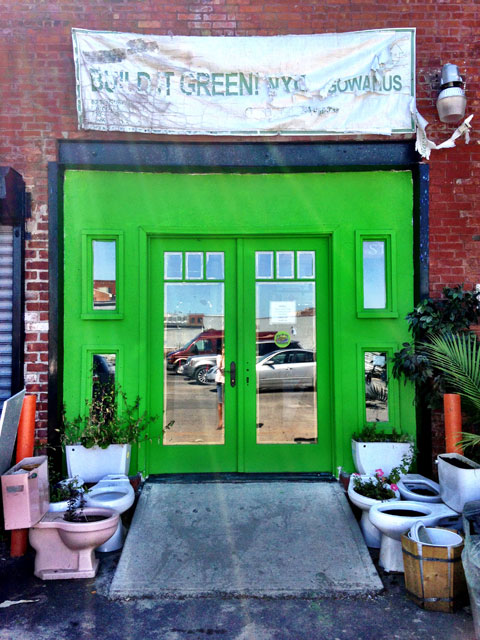
“I think one of the big advantages for the artists here is that it’s still affordable,” Rhia told me when I asked about why an artist might choose Gowanus to set up shop. “And it will hopefully stay that way.” For the time being it seems that that is likely the case, as the clean-up of the canal is expected to take over a decade, and it’s unlikely that much large-scale development will happen in the meantime.
Another big advantage for Gowanus? It’s between Park Slope and Carroll Gardens, two of Brooklyn’s most affluent neighborhoods. The commercial aspect of the art world can be tricky, especially for people who are unaccustomed to purchasing art at a gallery, or directly from the artist, but Rhia would like to see those bridges broken down in Gowanus. “The goal is to put revenue in the hands of the artists.”
That sentiment was echoed when I visited Ground Floor Gallery, which is located on the Gowanus-Park Slope border. Curators Jill Benson and Krista Saunders opened Ground Floor Gallery in April of 2013 after years of hosting shows in temporary spaces. Outside a sandwich board read: “Original, AFFORDABLE Art by Local, Emerging Artists”, and inside was a show whose quality was typical of what I’d seen from the Gowanus art scene: well curated, diverse, and thoughtful works of art.
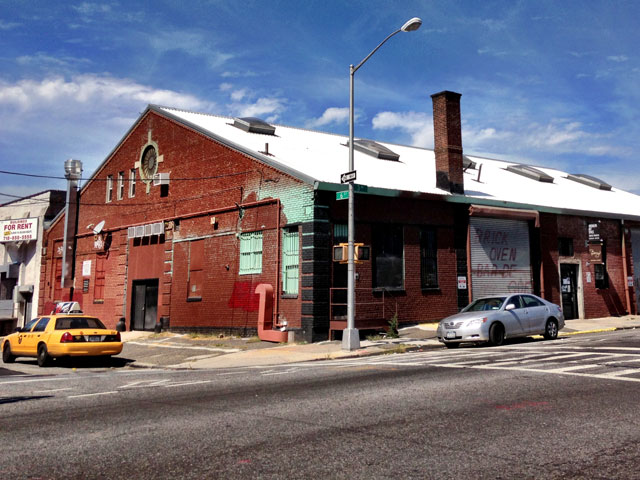
“We want to build collectors,” they told me while we were on the subject of the untapped potential of Park Slope and Carroll Gardens, adding, “When artists come in to show with us we help them with pricing and selling their works.” Their gallery will be participating in the Gowanus Open Studios, and for the entire month of October they will have a show featuring exclusively artists that are living and working in Gowanus, or as Krista playfully described it, “Jill and Krista on the hunt for Gowanus’ biggest talents.” Gowanus has treated them well and has allowed them greater freedom to present work they really believe in. “We aren’t focused on profit because the costs are manageable,” Jill explained.
Manageable costs is exactly why artists have been able to live and work in the Gowanus area during the past seventeen years and hopefully for much longer. For the time being, the Gowanus Canal is preventing any large-scale gentrification and the art scene is only becoming more popular. Everyone I spoke to agreed that they would like to see Gowanus become a destination for not only artists, but art lovers, and especially art collectors—but they also want to see the spirit of the neighborhood preserved. One possible solution is for the artists and gallery owners to buy their spaces now while it is still reasonably cheap, so that if in ten years—once the Whole Foods is completed and the canal cleaned up—the neighborhood begins to gentrify, they will still have control over their studios and galleries.
Ideally things would be able to work as a perfect symbiotic relationship. Gowanus will stay an artist’s haven, the studios large and the rent cheap, and the art loving citizens in next door Park Slope and Carroll Gardens will benefit by having a wellspring of fantastic, affordable art just a stone’s throw away. As recognition of the Gowanus art scene continues to grow, this doesn’t seem like an impossibility. With the Gowanus Open Studios in October, residents of Park Slope and Carroll Gardens will have a perfect opportunity to see all that their neighbor’s have to offer.
It has been said recently that the dream of being an artist in New York City is an unattainable fantasy, but for the time being there is a small ray of hope, shining right up the putrid waters of one of the country’s most polluted water ways. As long as artists and art lovers are pro-active we can preserve the great tradition of the neighborhood, and keep artists living and working in Brooklyn.

Leave a Reply